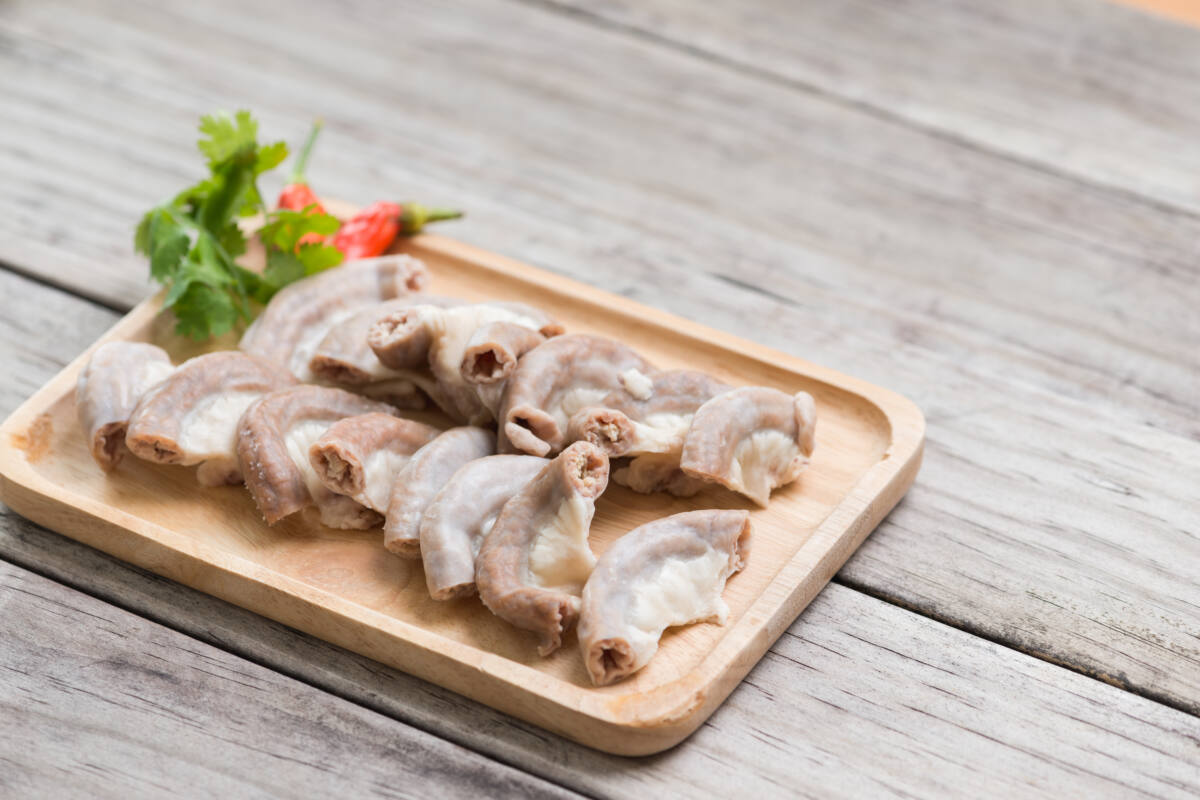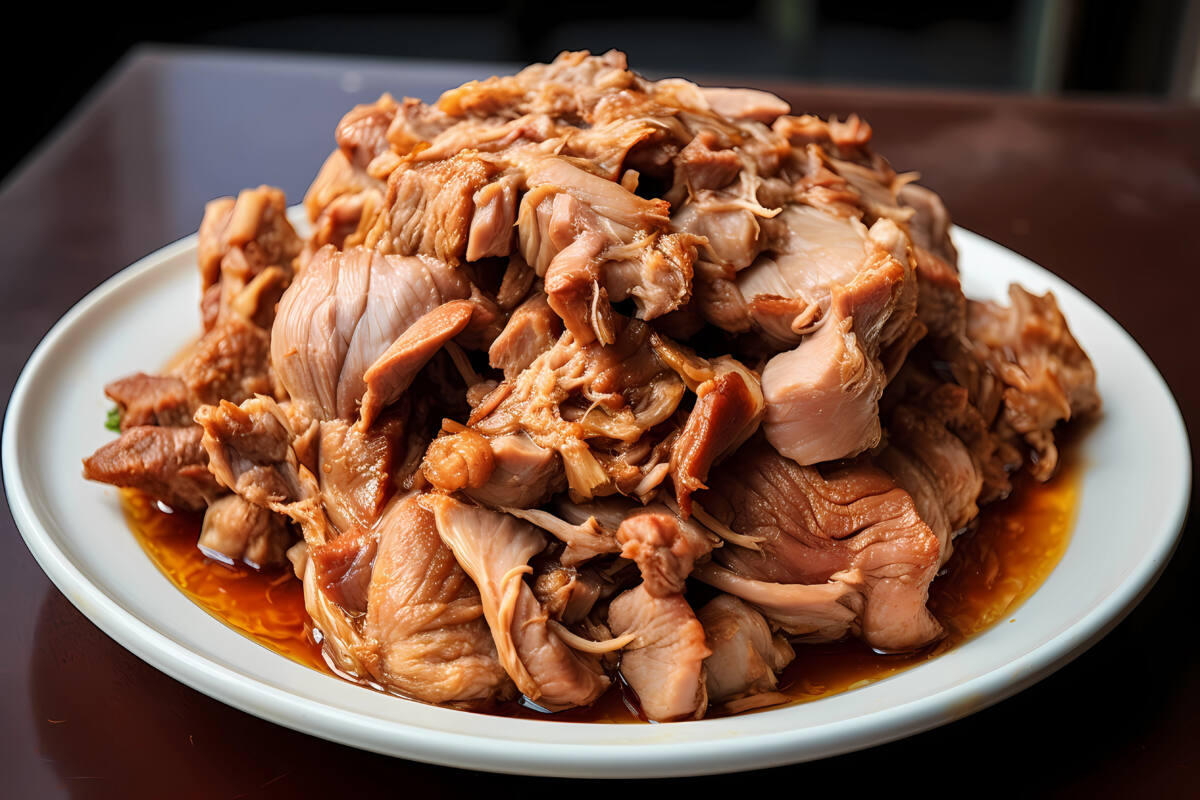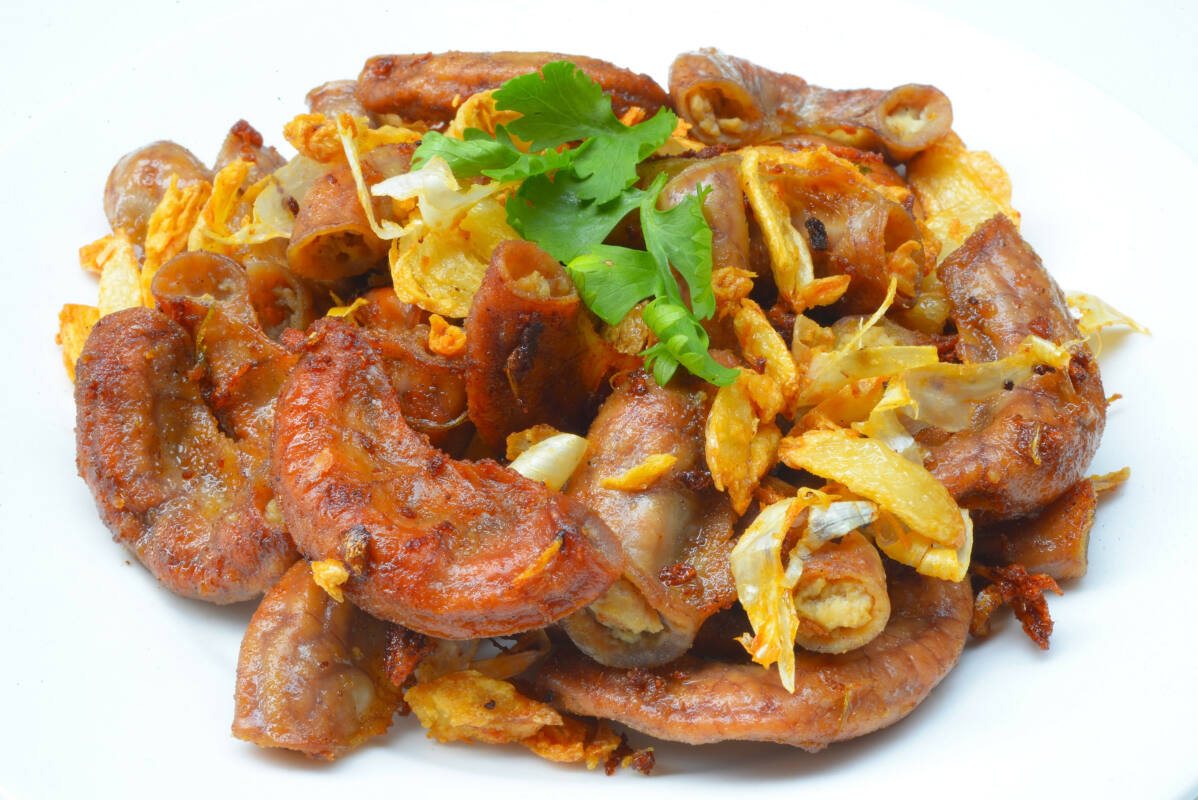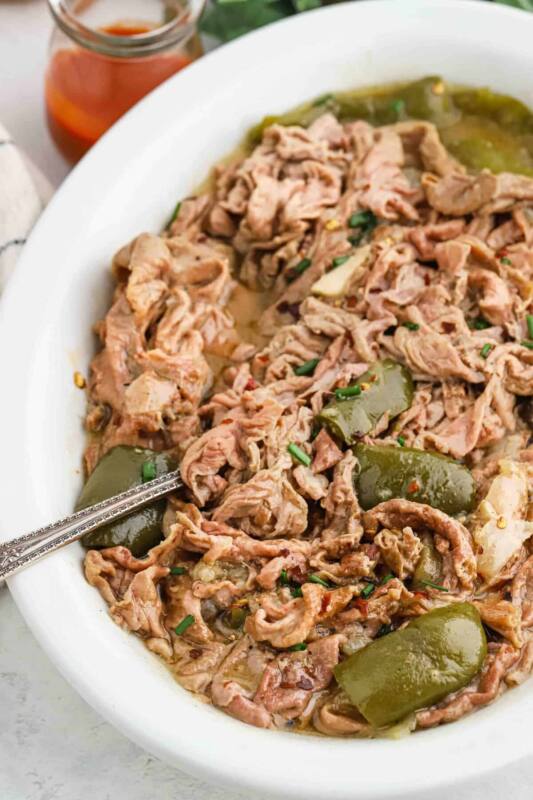If someone dared you to eat cooked hog intestines, would you accept the challenge?
Well, chitlins (or chitterlings) are just that: the intestines of a pig that are boiled or fried in spices and seasonings. They are often cut into one-inch pieces for eating.
And yes, lots of people love to eat this quintessential Southern side dish — no daring required. That includes Jocelyn Delk Adams, the cookbook author, Food Network TV personality and founder of Grandbaby Cakes.
She inherited her chitlins recipe from her Mississippi-native dad, and she describes them as a “tender, not-too-chewy delight that’s subtly porky and mild, soaking up all the flavors you throw at it.”
The History of Chitlins
How did chitlins come to be a soul food staple, alongside collard greens and sweet potato pie? According to Atlas Obscura, the dish dates back to the pre-Civil War era in America, when wealthy slaveowners got the choice cuts of slaughtered pigs and enslaved people were forced to eat the less appetizing cuts like the intestines.
Southern Living notes that chitlins were culturally incorporated by the descendants of enslaved people and in some cases even became a source of pride. Only a skilled cook can prepare a safe and delicious chitlin recipe. They even became part of a code that helped Black people feel safe during Jim Crow years: when served in restaurants and music venues, chitlins were a good sign.
Over the centuries other countries have cooked their own versions of chitlins in a spirit of “waste not, want not.”
In fact, as Allrecipes.com explains, animal intestines continue to be prepared all over the world. In Scotland, people make haggis, which is boiled sheep’s intestines served in the animal’s stomach. In France, restaurants may serve tricandilles, which are pig intestines wrapped in a vine branch. Latin Americans eat cow intestines in a dish called chinchulín. And in Japan, skewers of fried pig intestines are called motsu.
MORE: Here’s how to make pimento cheese, a Southern staple

Prepare Chitlins Very Carefully
If you’re a little wary of chitlins because feces pass through the intestines, you’re right to be. Chitlins need to be thoroughly cleaned before you cook them.
When raw, chitlins can contain harmful bacteria like E. coli and salmonella, as well as undigested food — all of which can cause an illness called yersiniosis (with symptoms of abdominal pain, fever and bloody stool).
If you’re preparing chitlins, keep in mind that you can infect a child if you don’t thoroughly wash the bacteria from your hands before touching them or one of their toys.
Cleaning chitlins properly is a work-intensive endeavor, so your best bet is to purchase them pre-cooked from a butcher. You should still clean them yourself; wash your hands first and boil the chitlins for at least five minutes. Then check each one for debris and rinse thoroughly until it’s all gone.

Boil or Fry? Take Your Pick!
All clean? Great! The hard part of chitlin preparation is over. To boil chitlins, add them along with your chosen seasonings to a pot of boiling water for three hours. Your recipe might include vinegar, onions, garlic, salt and pepper. Drain and serve!
To fry chitlins, boil them first for a few hours and baste them in your choice of batter. Then add them to a saucepan with a few inches of oil and fry until they’re brown and crispy.
MORE: Shrimp and corn chowder recipe makes classic Southern cooking simple

“There’s no gray area with chitlins,” Bruce Tucker, the founder of a chitlin-cleaning business called Gourmet Food Center, told the Detroit Free Press. “Either you love them or you hate them. There’s people, Black or white, they’ll tell you they’ll never touch them. You couldn’t put a gun to their head to make them eat them. Then there’s people that would put a gun to your head and take yours. It’s a culture thing.”
But naysayers might just change their minds if they try Adams’ version, which she pairs with hog maws for an authentic soul food meal.

Jocelyn Delk Adams’ Chitlins Recipe
Ingredients
- Chitterlings: Chitlins can sometimes play hard-to-get. They might not be in your local supermarket, but a trip to a Latin or Asian market could lead you straight to them. Also, even if you buy them pre-cleaned, you’ll want to clean them thoroughly again.
- Yellow Onion: Opt for a large, fresh onion; it’ll break down over the long cook, infusing the chitlins with its delightful flavors.
- Green Bell Pepper: This crunchy veggie has a mild, slightly tangy flavor. When it simmers with the chitterlings, it offers a subtle freshness and color contrast.
- Seasoned Salt (like Lawry’s): More than just salt, this seasoning blends various herbs and spices to enhance the overall taste. Lawry’s, for instance, is a popular (and great) choice!
- Garlic Powder: A staple in many kitchens, garlic powder brings a robust garlicky aroma without the fuss of peeling and mincing fresh cloves.
- Black Pepper: A dash of black pepper adds a little kick. Freshly ground is always best, but pre-ground will do the trick in a pinch!
- Crushed Red Pepper Flakes (optional): For those who like a bit more kick! Adjust according to your heat tolerance; remember, it’s easier to add more later than to take it away.
- Apple Cider Vinegar (optional): This one’s optional, but it brings a tart, zesty edge to the dish. Plus, it can help mellow out the strong scent of the chitterlings while they cook.
- Hot Sauce (for serving): This is where you make it your own! A classic like Tabasco or a Southern specialty like Crystal Hot Sauce brings a fiery touch that takes these chitterlings to the next level.
Visit Adams’ website to get the full directions
What do you think? Will you be giving chitlins a try?
Have you tried chitlins? This Southern staple is worth a shot originally appeared on Simplemost.com, helping make the most out of life.
> > SIGN UP for the Simplemost weekly newsletter < <


